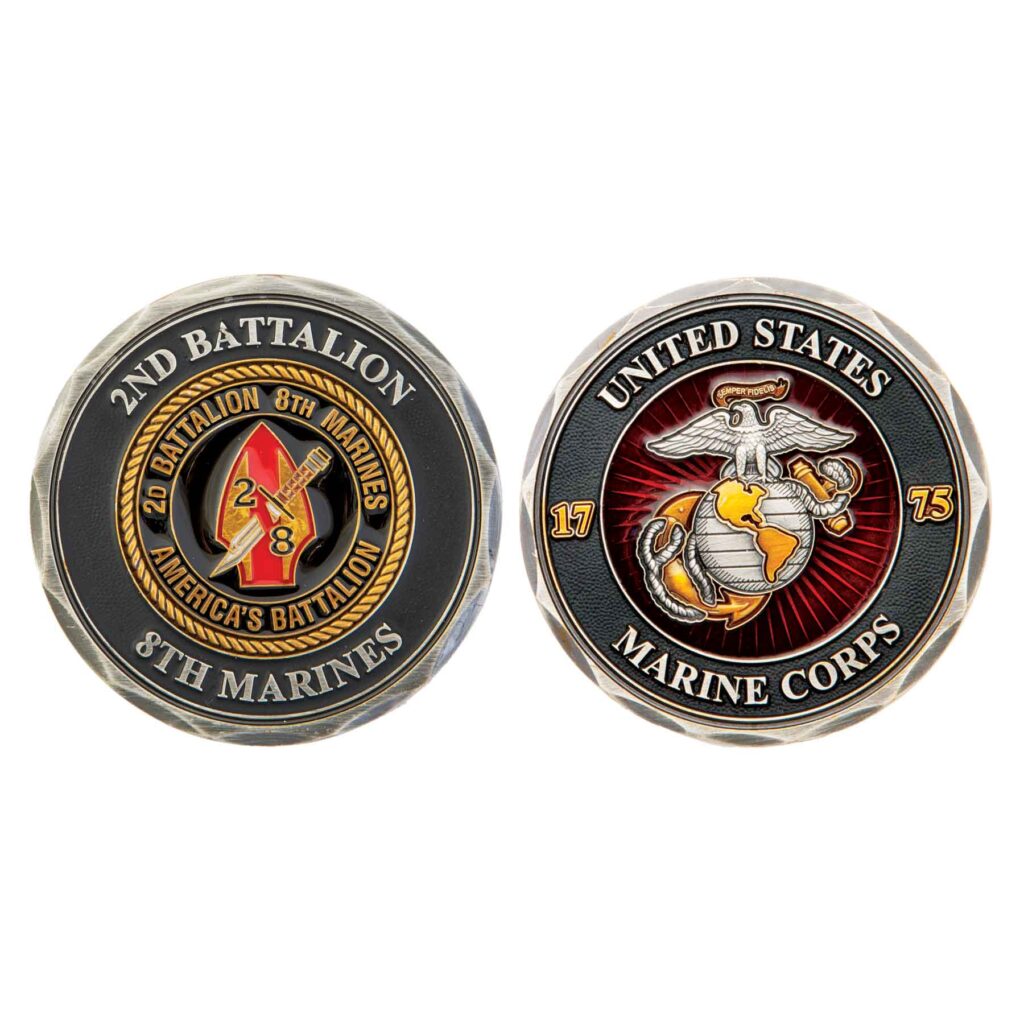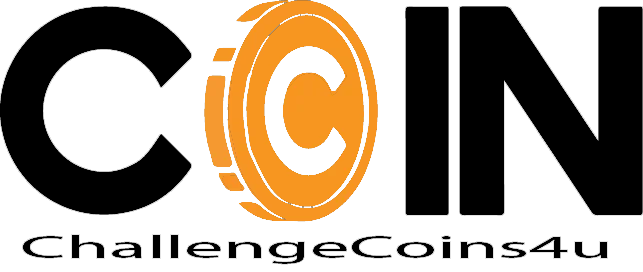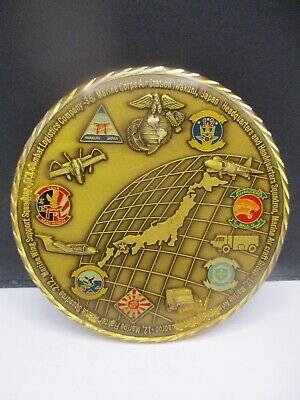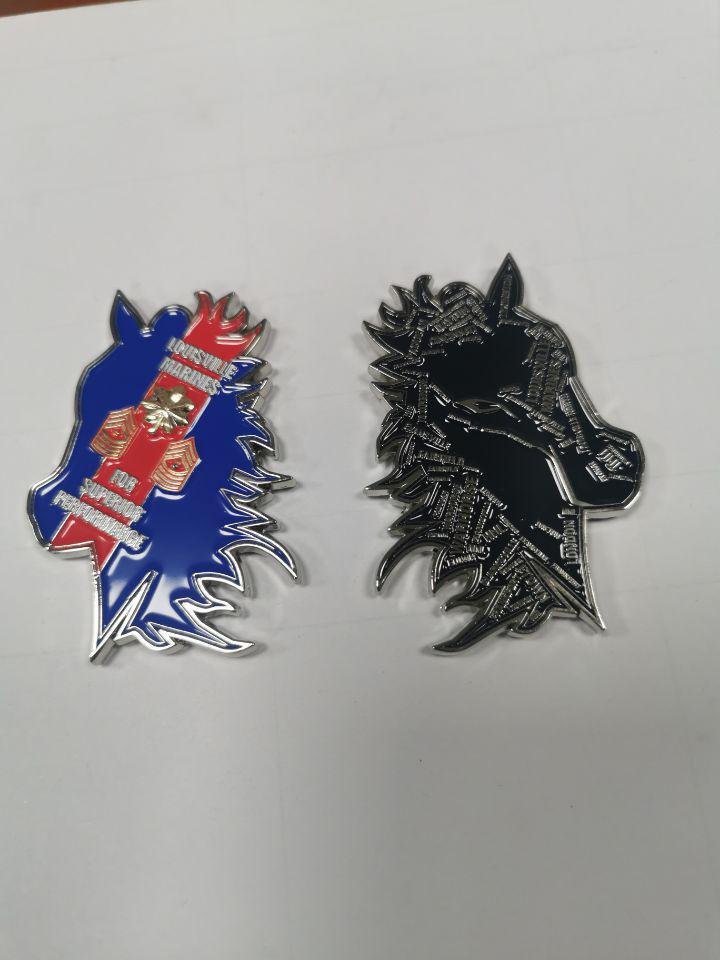A Journey Through Time: Uncovering the Rich History and Origins
The tradition of bestowing and carrying unit medallions is one that resonates deeply within military culture, and its roots may stretch further back than many realize. Some accounts suggest that the concept of rewarding military valor with a form of coin can be traced to ancient Rome, where soldiers might receive bonus coins bearing the mark of their legion . While the definitive origins remain a subject of some discussion, this early association hints at a long-standing human impulse to commemorate military service and achievement through tangible tokens .
However, the most widely accepted narrative concerning the genesis of the modern tradition points to the First World War . The story often recounted involves a wealthy American lieutenant serving in the Army Air Corps, the precursor to the Air Force. Seeking to foster camaraderie within his newly formed flying squadron, he commissioned bronze medallions for each member, emblazoned with the unit’s insignia. This act of unity would soon take on a life-saving significance. When one of the pilots was shot down over enemy territory and captured, his personal identification was confiscated. However, he managed to hold onto his medallion, which he wore in a pouch around his neck. Upon escaping and reaching a French outpost, the pilot was mistaken for an enemy. With no other means of identification, he presented his medallion. The French soldiers recognized the squadron’s insignia, thus confirming his allegiance and sparing his life. This dramatic event is believed to have cemented the tradition, with members of the squadron thereafter carrying their medallions at all times. The sheer prevalence of this particular story across numerous sources underscores its importance in shaping the contemporary understanding of these medallions and their symbolic power.
The tradition did not remain static but rather evolved and adapted across different military conflicts and eras . While their widespread use is often associated with the Vietnam War, some experts argue that their modern predecessors emerged during either World War I or World War II, with elite units often being the first to embrace the practice . The Korean and Vietnam Wars saw the tradition grow and spread throughout all branches of the U.S. armed forces . Interestingly, another account from World War II describes how American silver dollars were used for identification by an underground Filipino unit when American currency was banned, illustrating the practical applications these tokens could serve . Furthermore, some narratives suggest the tradition might even have earlier origins, possibly dating back to World War II or even the Civil War, where soldiers carried coins from home as lasting mementos . Another compelling story links the origin to a bar in Vietnam run by Army infantrymen who sought to exclude non-infantry personnel by requiring proof of combat service, initially through enemy bullets, which eventually evolved into unit-emblazoned coins . The Air Force also has its own early history with these tokens, with mentions of “emblem medallions” and medals presented by the Aero Club of America to pioneering airmen, highlighting the diverse ways this tradition took hold across different branches . This historical journey reveals that the tradition was not a singular invention but a practice that developed organically, influenced by specific circumstances and the evolving needs of military units. The “coin check” tradition, a significant aspect of the modern practice, appears to have gained prominence in later periods.
More Than Just Metal: Exploring the Profound Significance and Purpose
These small medallions are far more than mere pieces of metal; they embody a rich tapestry of meaning and serve several vital purposes within the military community . At their core, they represent membership in a specific group or unit, signifying a shared identity and fostering a strong sense of camaraderie among those who carry them . They also serve as acknowledgments of achievements, dedication, and exemplary service, recognizing individuals who have gone above and beyond in their duties . This recognition instills unit pride, improves esprit de corps, and rewards the hard work and excellence of service members .
Beyond individual recognition, these tokens play a crucial role in building unit cohesion and morale . The traditions associated with them, particularly the “coin check,” actively reinforce unit identity and create positive social dynamics within military groups . The act of carrying and presenting these medallions strengthens the bonds among unit members, fostering a sense of brotherhood and mutual respect through shared rituals .
Ultimately, these items serve as tangible representations of a Marine’s service and dedication . Unlike formal medals or ribbons, these coins are often carried personally, making them constant, tactile reminders of shared experiences and the strong connections forged through military service . Their weight and feel can evoke powerful memories and emotions, solidifying their significance as more than just decorative objects.
Understanding the Unique Design Elements
Marine Corps coins are often rich in symbolism, with specific design elements carrying deep meaning and reflecting the core values of the Corps. Perhaps the most iconic and prominent symbol found on these coins is the Eagle, Globe, and Anchor . This emblem is the official insignia of the Marine Corps, and its components each hold significant meaning. The Eagle represents the United States, symbolizing the nation’s ideals and the Marines’ commitment to uphold them. The Globe signifies worldwide service, reflecting the global reach and presence of the Marine Corps. The Anchor points to the maritime heritage of the Corps, grounding the values of honor, courage, and commitment . The consistent presence of this emblem underscores the deep connection of these coins to the fundamental identity and principles of the Marine Corps.
In addition to the emblem, common mottos are frequently incorporated into the design of these medallions. “Semper Fidelis,” meaning “Always Faithful,” is the official motto of the Marine Corps and is often inscribed on their coins . Adopted in 1883, this motto signifies the unwavering dedication that individual Marines have to their Corps, their country, and their fellow Marines . Its inclusion on the medallions serves to reinforce these core values and the enduring ethos of the Marine Corps. While “Semper Fidelis” is the most prevalent, other Latin phrases, such as “Mori Quam Foedari” (death rather than disgrace), may also be used, adding another layer of traditional significance .
The designs of these medallions often vary considerably based on the specific units, achievements, and missions they represent . Individual units, squadrons, and organizations within the Marine Corps frequently create their own unique coins featuring their specific insignias, mottos, or other elements that represent their distinct identity and values . Coins may also commemorate specific deployments, significant dates, or the names and ranks of service members, particularly when given for specific achievements . Symbolic elements directly relevant to the commemorated event or mission are also commonly included . This customizability allows each medallion to tell a unique story, reflecting the particular experiences and identity of the unit or individuals involved, thus enhancing their personal and collective significance.
When and Why are These Coins Exchanged?
The exchange of these medallions is often a significant moment, imbued with honor and recognition. They are frequently presented by commanding officers or other high-ranking officials to service members as a mark of special achievement, outstanding service, hard work, or overall excellence . Commanders are often allotted a certain number of coins to distribute annually as a gesture of appreciation . Receiving a coin from a commanding officer is considered a distinct honor, signifying recognition from a higher level of leadership and creating a lasting memento of the accomplishment . This presentation is often accompanied by a handshake and sometimes a brief ceremony, further amplifying its significance and boosting morale .
These tokens are also exchanged during various visits, ceremonies, and commemorative events. They may be given in recognition of visits to a particular organization or as tokens of appreciation for participation in specific events or missions . Furthermore, they serve as commemorative items for significant milestones such as anniversaries, large-scale deployments, successful missions, graduations, promotions, and other notable achievements within the Corps . They can also be presented as welcome or farewell gifts, marking the beginning or end of an individual’s time with a unit or in a specific role . Additionally, these items make meaningful gifts for important milestones in a Marine’s career, such as graduation from boot camp or promotion to a higher rank . In these instances, the medallion acts as a symbolic marker of career progression and a tangible representation of the Marine’s dedication and achievement .
The Unspoken Code: Navigating the Etiquette of Challenge Coin Exchanges
The exchange of these medallions is governed by an unspoken code of conduct, emphasizing respect and tradition . There are proper ways to both present and receive a coin. Typically, the presentation involves a firm handshake, often performed discreetly, accompanied by a sincere expression of gratitude or acknowledgment of the recipient’s achievement . Coins given as awards are often passed from the right hand of the giver to the right hand of the recipient during the handshake . It is considered important to present the coin with the utmost respect, sometimes even with a brief explanation of why it is being given and the significance of the gesture . The act of receiving a Marine Corps medallion should be acknowledged with humility and gratitude, reflecting the values of the Corps and the esteemed tradition associated with these tokens . A dramatic or overly ostentatious presentation is generally discouraged, with a more subdued and personal exchange often being preferred .
Beyond the act of exchange, there is an expectation of respecting the coin’s significance and avoiding any form of misuse . This includes taking good care of the coin, keeping it clean, and storing it in a safe place . Using the coin as jewelry or altering it in any way is generally frowned upon, as it detracts from its intended purpose as a symbol of service and camaraderie . Even accidentally dropping the coin can be seen as a breach of etiquette, as it might unintentionally initiate a coin check and could indicate a lack of respect for the token .
A fundamental aspect of this unspoken code is the importance of carrying your coin . Given the tradition of the “coin check,” service members are expected to have their coin readily available at all times. Failing to produce one when challenged can result in the social obligation of buying drinks for those who do have their coins . Therefore, carrying the coin is not only a matter of tradition but also a practical consideration within the social dynamics of military units.
The Value These Coins Hold for Marines
These seemingly small metal tokens hold a profound emotional value for Marines, serving as potent reminders of shared experiences, sacrifices, and the enduring bonds forged through their service . They are more than just collectibles; they are deeply personal mementos that evoke powerful memories and emotions related to a Marine’s time in service and the strong sense of camaraderie experienced with fellow Marines . Some veterans even express that the significance of a challenge coin can surpass that of material possessions like jewelry .
These medallions also play a vital role in fostering pride in one’s service and unit affiliation . Receiving a coin is often seen as a significant honor, instilling a deep sense of pride and belonging within the recipient . The coins reinforce a Marine’s identity and connection to their unit and the broader Marine Corps community, cultivating a strong sense of belonging and pride that can last a lifetime.
A Project to Be Proud Of: The 2nd MEU Coin
Our unit, the 2nd MEU, recently collaborated with Challenge Coins 4 U to create a special coin commemorating our latest deployment. The level of detail and craftsmanship was exceptional, truly capturing the spirit and dedication of our Marines. The entire unit was incredibly satisfied with the final product, and the coins serve as a constant reminder of our shared accomplishments and the bonds we forged. It was a seamless process, and the team understood our vision perfectly.

Crafting Your Own Legacy: Designing Custom Marine Corps Coins
For those looking to create their own unique Marine Corps coins, the design process involves several key considerations . Thoughtful planning should include the desired size and shape of the coin, the type of metal to be used, and the level of detail to be incorporated, including options like 3D designs or cutouts . Various finishes, such as polished or antique plating in gold, silver, or copper, can significantly impact the coin‘s appearance . The choice of edge style, such as rope, diamond cut, or standard, also contributes to the overall design . Additionally, the use of color, often achieved through enamel filling, should be carefully considered . Simplicity and the use of meaningful symbols are often advised to create an impactful and easily recognizable design .
Incorporating unit-specific symbols, mottos, and imagery is crucial for creating a medallion that truly represents a particular group or occasion . This might include unit insignias, specific deployment details, significant dates, the service member’s name and rank (if appropriate), unit mottos, and dates commemorating important events . Personalizing the coin in this way strengthens the connection between the members and the experiences they shared .
A wide range of customization options are available to bring these designs to life . These include various metal choices like iron, zinc, brass, copper, silver, and gold, each offering a different look and feel . Different plating finishes, such as polished, antique, black nickel, or even dual-plated options, provide further aesthetic choices . Numerous edge types, including standard, rope, oblique, flat bevel, crosscut, spur, and reeded edges, add unique visual and tactile elements . For incorporating color, both hard and soft enamel options are available, offering different textures and levels of durability . Additional features like 3D designs, cutouts, epoxy coatings for protection, engraving, and even functional elements like bottle openers can be incorporated to create truly distinctive medallions .
The Art of Creation: How Custom Marine Corps Coins Come to Life
The journey from a design concept to a finished Marine Corps medallion involves a multi-step manufacturing process that blends technology and skilled craftsmanship . Typically, the process begins with the creation of a custom mold based on the approved design . This often involves using computer-aided design (CAD) and computer-aided manufacturing (CAM) software to create a digital blueprint, which is then used to mill the inverse of the coin design into a steel die using a computer numerical control (CNC) machine . Separate molds are created for the front and back of the coin . Once the molds are made, they are tested and then hardened through a tempering process to ensure they can withstand the immense pressure of striking .
The next stage is die striking, where the hardened molds are used to stamp the artwork onto metal blanks using high pressure . For round coins, pre-cut metal blanks are typically used, while custom-shaped coins may involve stamping the design onto a strip of metal and then cutting out the individual coins . After striking, custom edges can be added to enhance the coin‘s appearance . The coins then undergo a polishing process to smooth out any rough edges and imperfections that may have occurred during striking, ensuring a high-quality finish . Following polishing, the desired metal plating is applied, often through electroplating . Finally, if the design includes color, enamel paint is applied to the recessed areas of the coin and then baked to harden, resulting in either a smooth (hard enamel) or textured (soft enamel) finish . Throughout this process, quality control is essential to ensure the final product meets the required standards of craftsmanship and durability . The longevity of these medallions is particularly important as they are often cherished for years and sometimes passed down through generations.
The Enduring Appeal and Importance of Marine Corps Coins
Marine Corps medallions stand as powerful symbols of history, camaraderie, and individual achievement. From their debated origins to their contemporary significance, they represent a deeply ingrained tradition within the Corps. They embody the values of honor, courage, and commitment, fostering a strong sense of belonging and pride among Marines. The revered “coin check,” the iconic Eagle, Globe, and Anchor, and the personal stories attached to each coin all contribute to their enduring appeal and importance. These tokens serve as tangible links to shared experiences and sacrifices, forging unbreakable bonds within the Marine Corps community.
Design Your Custom Marine Corps CoinToday!
Ready to create a lasting symbol of your unit’s legacy or commemorate a special achievement? Contact us today at Challenge Coins 4 U to begin designing your custom Marine Corps medallion. Our expert team will guide you through every step of the process, ensuring exceptional quality and a design that truly captures your vision. Honor your service and the bonds of brotherhood with a unique and meaningful keepsake.




